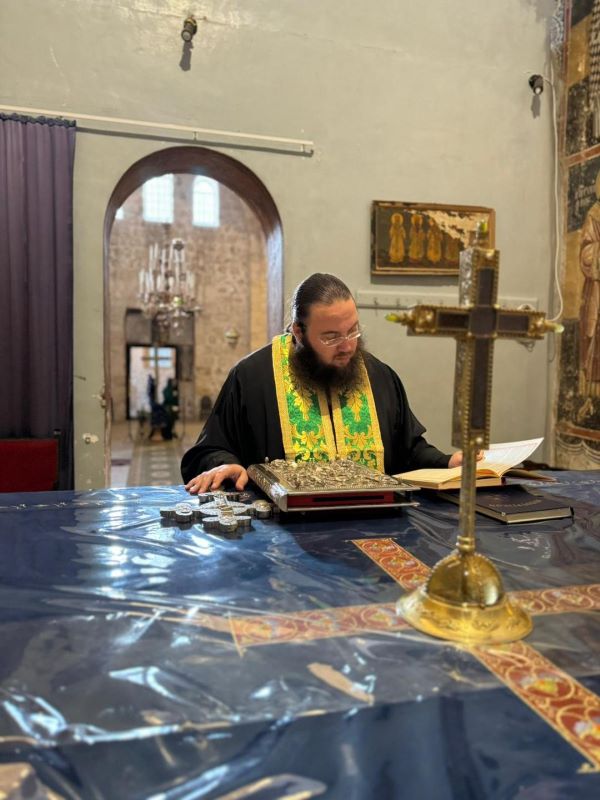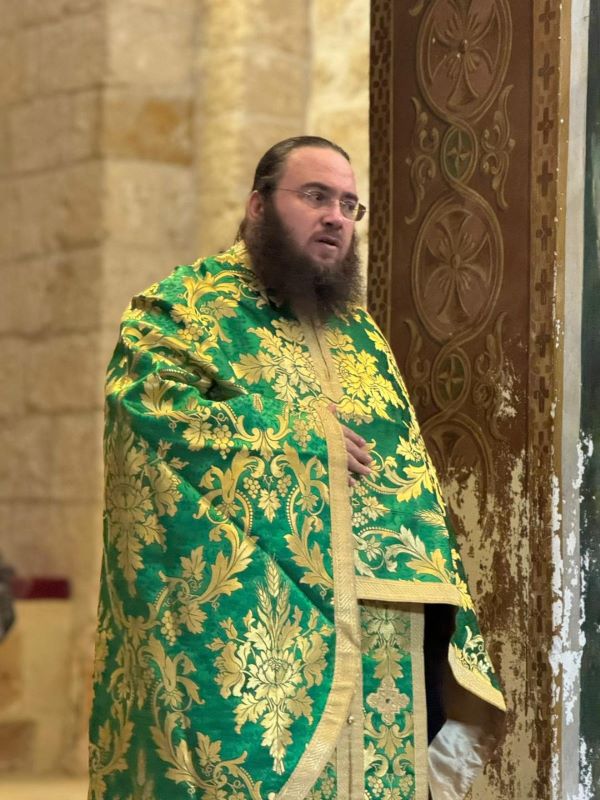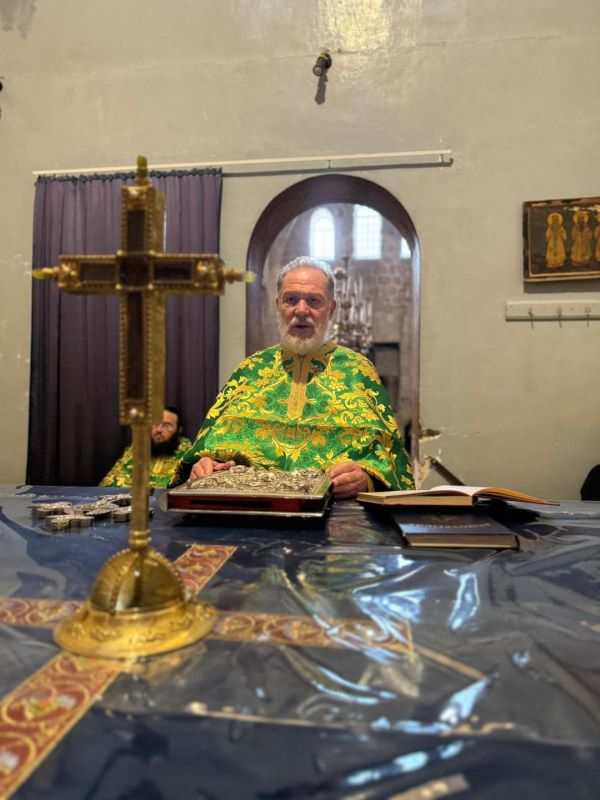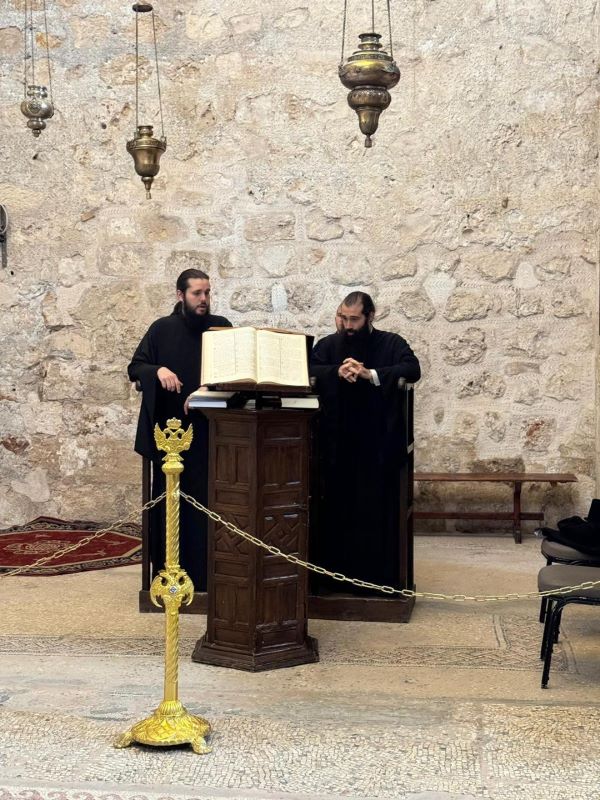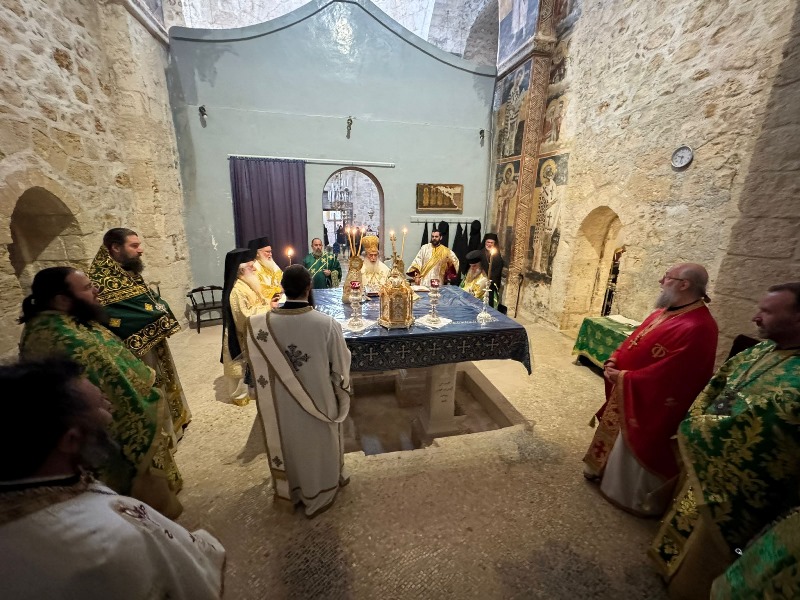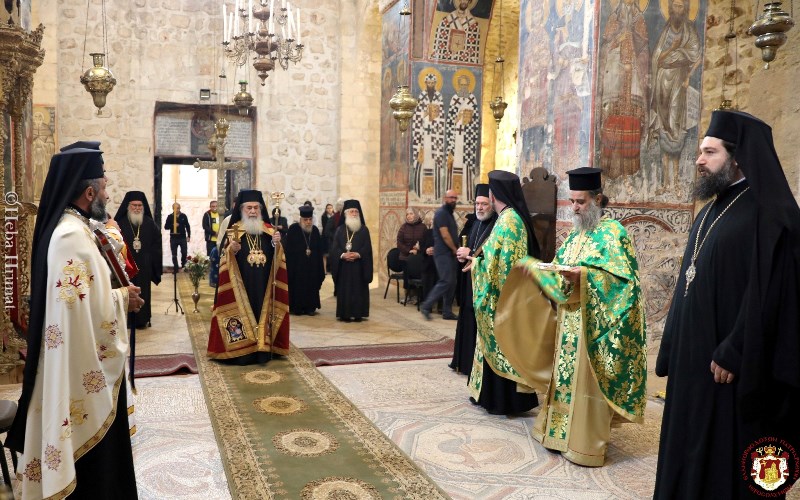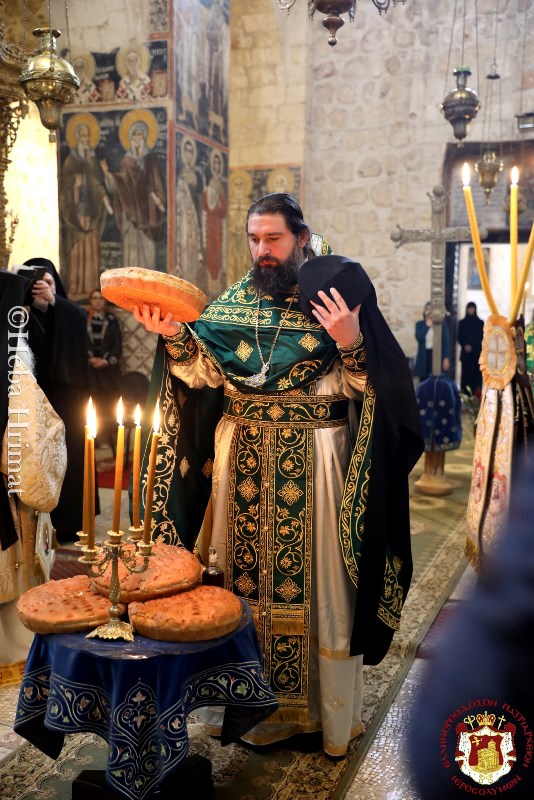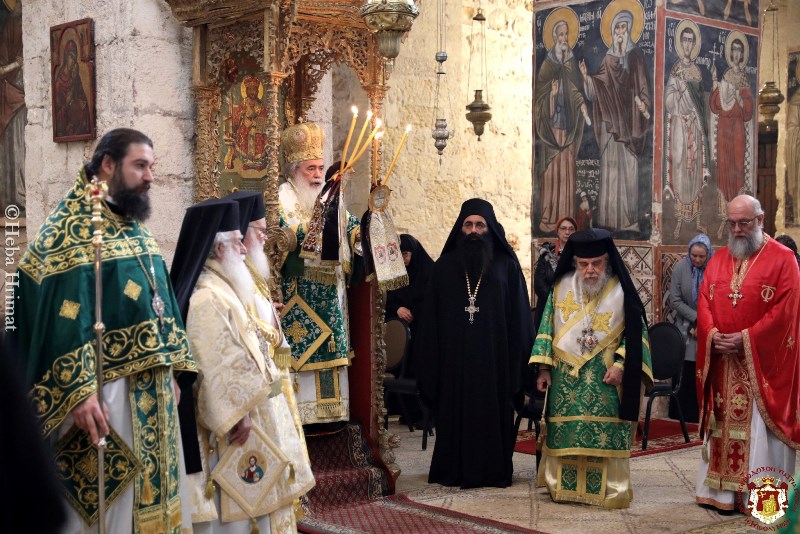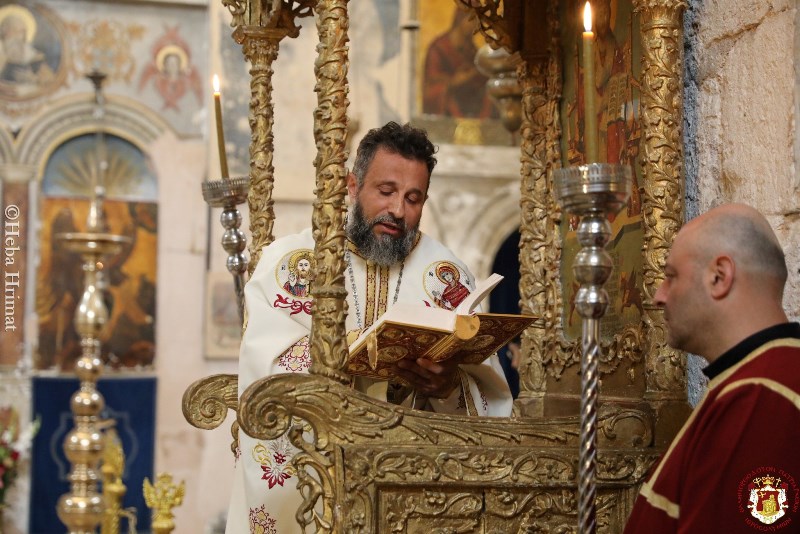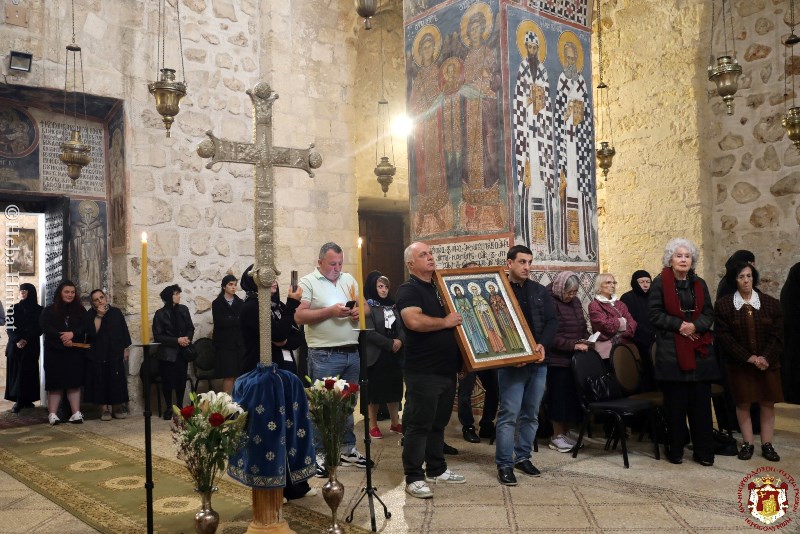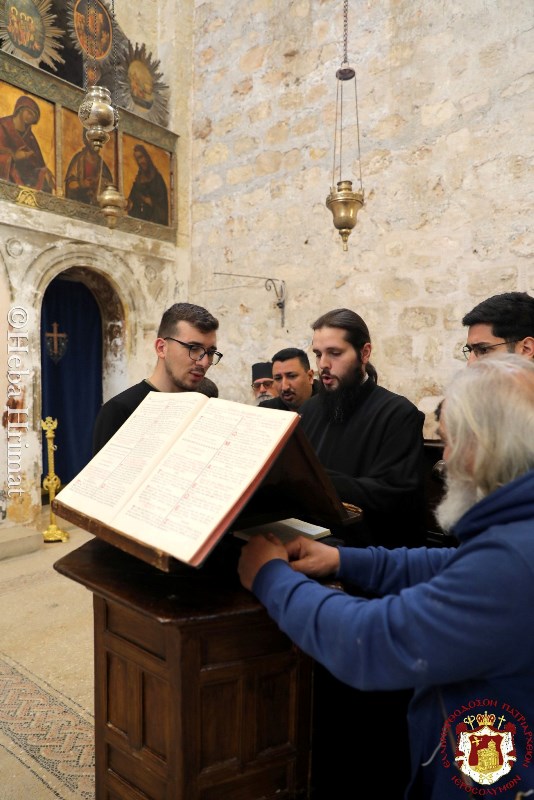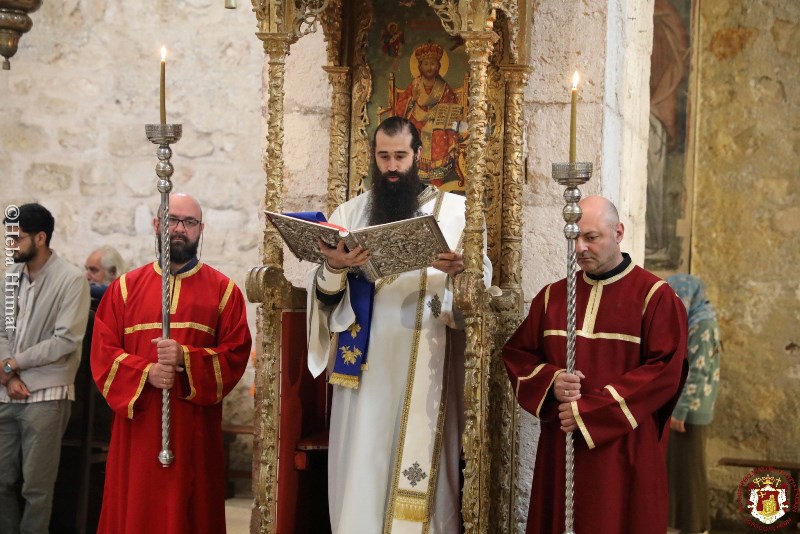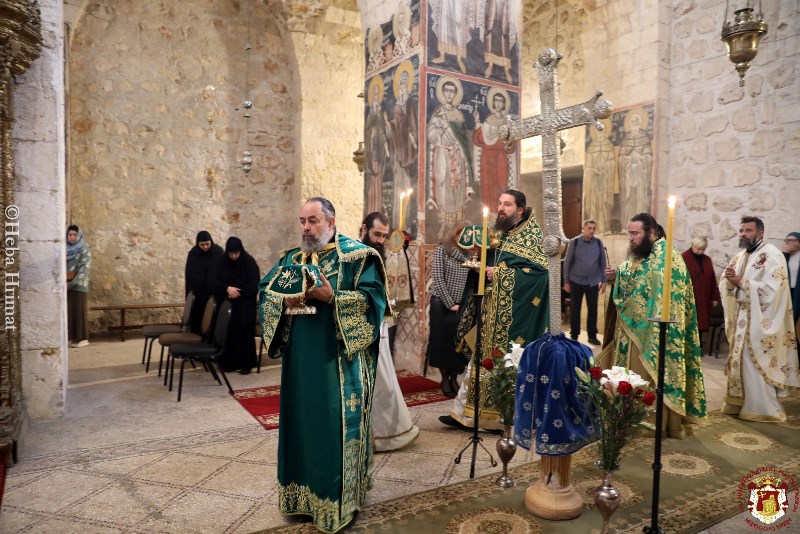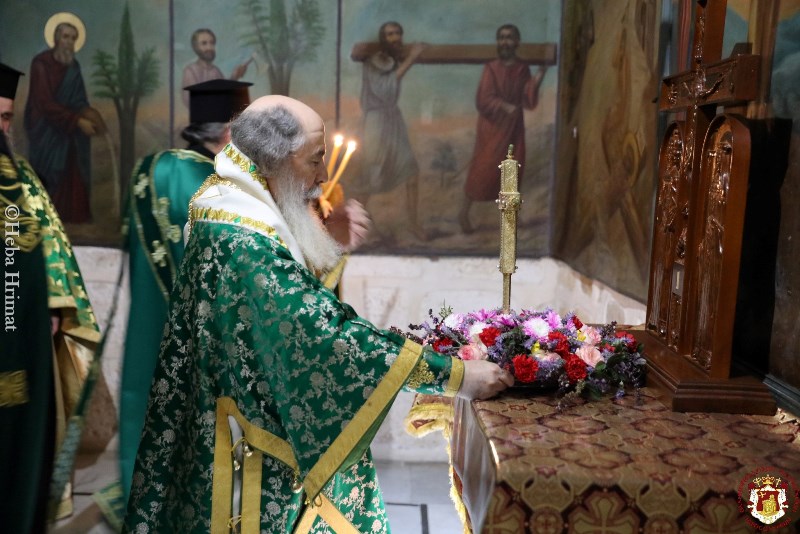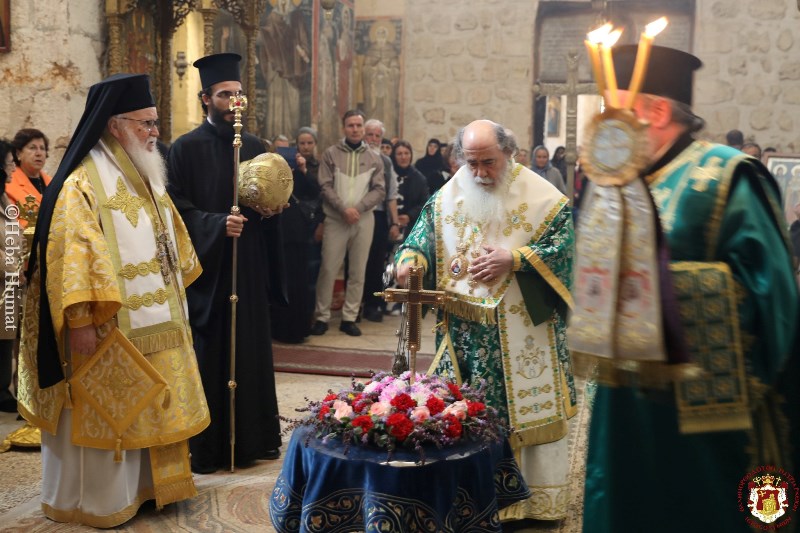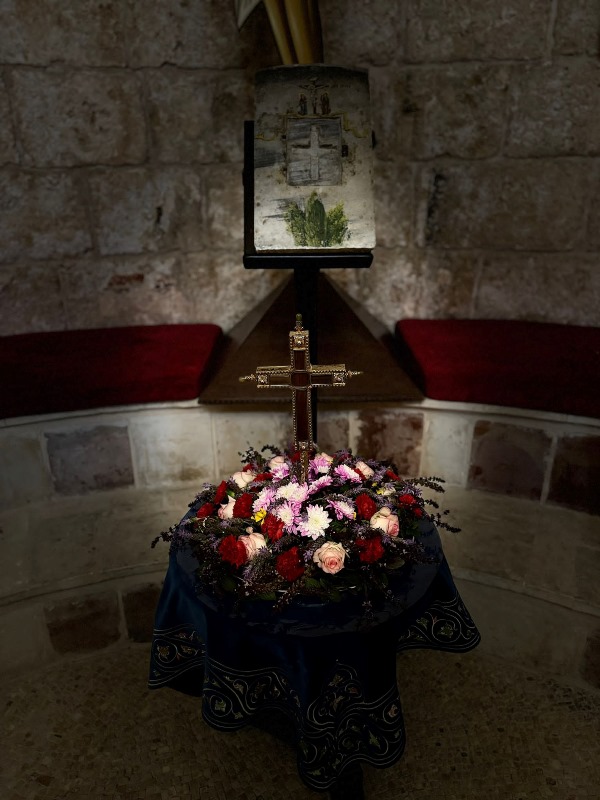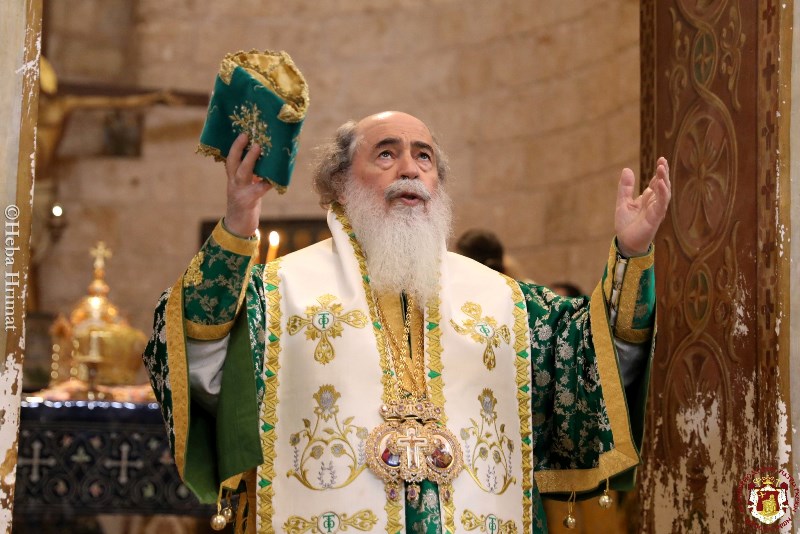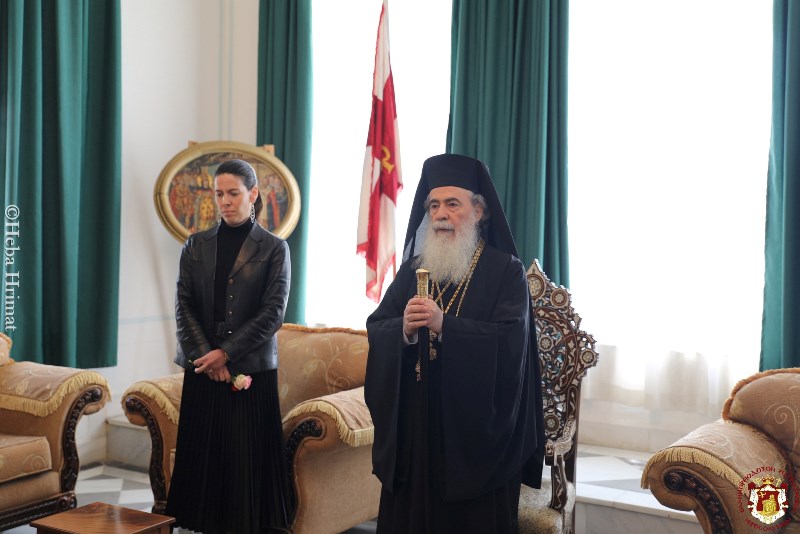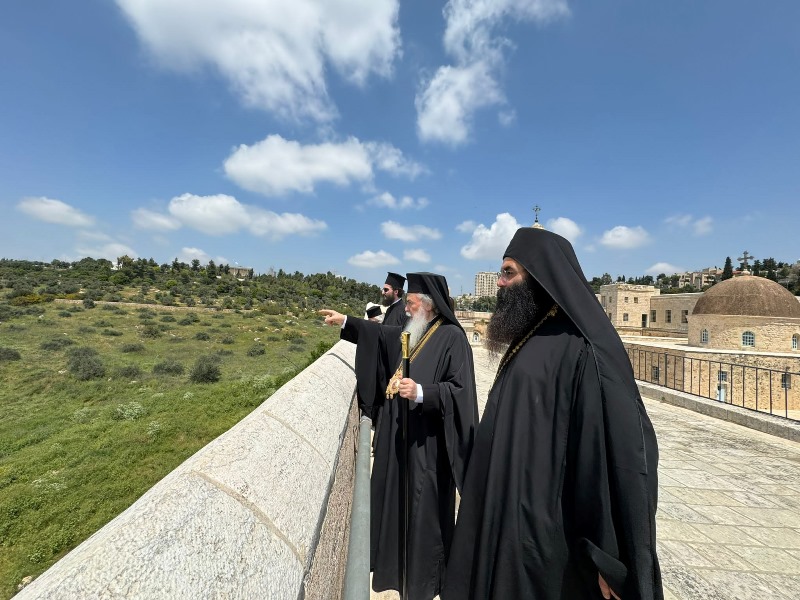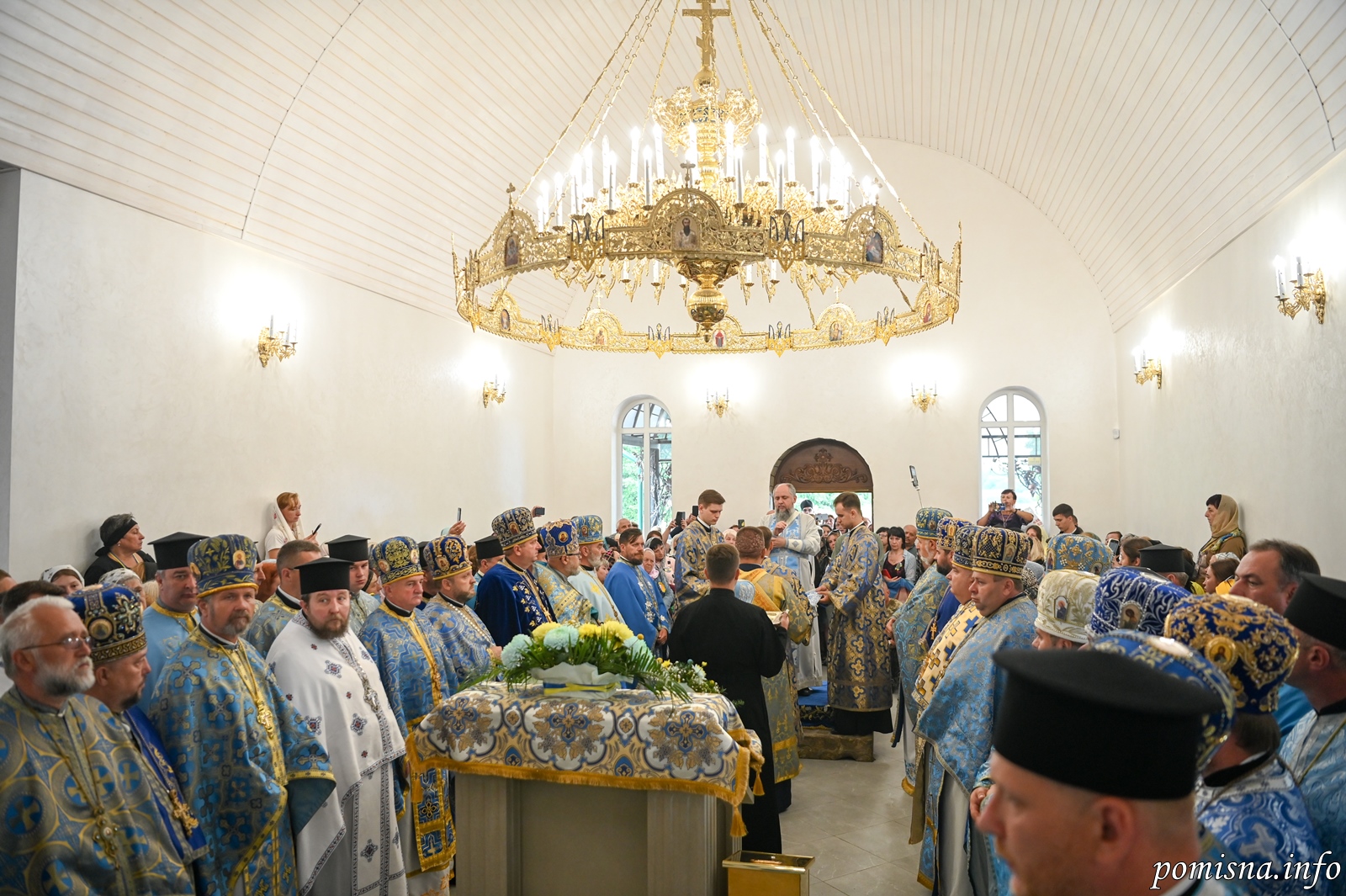The Feast of the Adoration of the Cross at the Holy Monastery of the Cross in Jerusalem
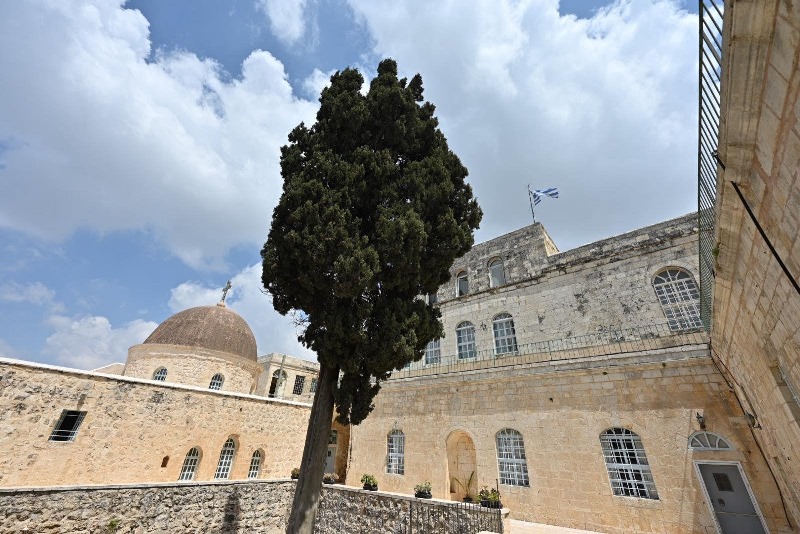

On the Fourth Sunday of Lent, April 1/14, 2024, the feast of the Adoration of the Holy Cross was celebrated in the Holy Monastery of the Holy Cross, located in western New Jerusalem near the Jewish Parliament.
Following the Status Quo, this feast was also celebrated in the Holy Monastery of the Cross because of the tradition that the wood of the Cross, on which the Lord was crucified for our salvation, was planted by the righteous Lot in the place where the Holy Monastery is located following the directive of Patriarch Abraham.
On this occasion, Vespers was celebrated on Saturday afternoon by Holy Sepulchre Hieromonks with Archimandrite Ieronymos first in rank. On Sunday morning the Divine Liturgy was officiated by His Beatitude Patriarch Theophilos of Jerusalem with the co-celebration of their Eminences, Metropolitan Kyriakos of Nazareth, the Archbishops, Aristarchos of Constantina and Methodios of Tabor, the Dragoman Archimandrite Mattheos, the Hegoumen in Madaba, Archimandrite Ieronymos, Priest Ioannis Antoniou and other Priests. The service was attended by the representative of the Greek Consulate General in Jerusalem Mrs. Anna Mandika and monks, nuns and members of our flock.
Before the distribution of Holy Communion His Beatitude delivered the following Sermon:
“God forbid that I should glory, save in the cross of our Lord Jesus Christ, by whom the world is crucified unto me, and I unto the world” (Gal. 6:14), the wise Apostle Paul preaches.
Beloved brethren in Christ,
Dear Christians,
The power of the Holy and Life-giving Cross of our God and Saviour Christ has gathered us in this holy place, where the three-composed tree was planted and the Monastery of the Cross was built, so that we may solemnly and in thanksgiving venerate the Wood of the Cross, through which, “God our King, before the ages, he hath wrought salvation in the midst of the earth” (Ps. 73,12) as David prophetically sings.
Indeed, the one who through sufferings, even though he was finished on the Cross [Jesus] became the cause of eternal salvation for all who obey him (Heb. 5:9), as preached by Saint Paul.
The Holy Cross, which was shown to be the instrument of redemption, is inextricably linked to death, pain, and the blood of Christ, ” In whom we have redemption through his blood, the forgiveness of sins, according to the riches of his grace; Wherein he hath abounded toward us in all wisdom and prudence” (Eph. 1, 7-8), as the wise Paul says again.
According to the revelation of the Evangelist John, the Cross is the saving tree, i.e. “the tree of life”. ” To him that overcometh will I give to eat of the tree of life, which is in the midst of the paradise of God.” (Revelation 2,7). And in more detail: “To him who will win in the battle against Satan and sin, I will give him to eat from the tree of life. In other words, I will claim him to enjoy the eternal goods in the Paradise of my Father, Who according to my human nature is also my God”, says the Lord.
Athanasios the Great, admiring the plan of God, Who through the cross leads the faithful to salvation and defeats the work of the devil, says: “O divine true wisdom and heavenly thinking! The Cross was set up and idolatry was destroyed. A Cross was raised and a diabolical dynasty was condemned” (P.G. 28, 1056)
The devil was condemned out of God’s infinite love for man: ” Be ye therefore followers of God, as dear children; And walk in love, as Christ also hath loved us, and hath given himself for us an offering and a sacrifice to God for a sweet-smelling savour” (Eph. 5, 1-2), Paul preaches.
It is worth noting that the living offering and sacrifice of Christ was made on the wood of the Cross, which is why the Cross is also called an “altar” where ” the Lamb of God [was placed] which taketh away the sin of the world” (John 1:29). Greater still … here the gift of the altar is laid and by the gift the altar is sanctified”.
In other words, Christ, Who is the gift, is “greater”, i.e. superior to the altar, therefore the altar, i.e. the wood of the cross, is sanctified by the offered gift, the sacrificed Christ. According to St. John of Damascus, the wood of the cross is true and venerable, in which Christ offered Himself as a sacrifice for us…sanctified by the grace of the Holy Body and Blood”, therefore “venerated”. Moreover, “we also venerate the type of the honourable and life-giving cross, even if it is made from other material, not honouring the material, not the birth, but the type as a symbol of Christ”.
In his homily, Saint Sophronios Patriarch of Jerusalem on the veneration of the Holy and Life-giving Cross in the middle week of Holy Pentecost, says in praise: “Hail, Holy Cross, where the Son and Word of God rested His hands and hugged us and brought us to Heavenly Father … and in you, Holy Cross, the divine blood of the Son and Word of the invisible Father was shed”.
This Holy Cross was prefigured by the Tree of Life, the one planted in heaven by God (where death is through wood, so through wood life and resurrection are given). “This Holy Cross was prefigured by the tree of life, which was planted in Heaven by God. Because death came through wood, life and resurrection had to come through wood” St. John of Damascus says.
And because our God is the Saviour, all people will be saved (Tim. 1′ 2-4) first He planted the tree of life in the middle of Paradise, when the fullness of time had not come, he planted the tree of salvation in the secret Paradise, that is, in the Virgin Mary, from whom Christ sprung from her pure blood, as Saint Cosmas Bishop of Maiuma exclaims in a hymn, saying: “O Theotokos, thou art a mystical paradise, which being untilled hath blossomed forth Christ, by Whom the life-giving Tree of the Cross was planted in the earth. In worshipping Him now through its exaltation, thee do we magnify” (Katavasiae of the Cross, Ode 9).
The fruit of the life-giving tree of the Cross, my beloved brothers, is the body and blood of Christ risen from the dead, of which we are called to eat and drink according to His command: “Verily, verily, I say unto you, Except ye eat the flesh of the Son of man, and drink his blood, ye have no life in you.” (John 6:53). ” He that eateth my flesh, and drinketh my blood, dwelleth in me, and I in him” (John 6:56).
The wise Paul often refers to the redemptive blood of Christ’s Cross. And this is because, through this blood, we are redeemed (Romans 5,9), we are bought (Eph’. 1,7), we become God’s property (Acts 20,28) and the unity and communion between believers in the eucharistic cup is declared (Cor. 10,16/11, 25-28). Moreover, the death of the Lord is reported, and His coming is declared “For as often as ye eat this bread, and drink this cup, ye do shew the Lord’s death till he come” (1 Corinthians 11:26).
This is why St. John of Damascus says in a hymn: We glorify your life-giving Cross, Christ God, your three-day Resurrection, for by it you renewed the corrupt nature of men, and raised it to the heavens forever, as the only good and philanthropist.
Let us, my beloved brothers, beseech the Mother of God, who gave birth to the One who was lifted up on the Cross, so that by the great power of the Holy Cross we may reach the luminous Resurrection of our Saviour. Amen. Many happy and peaceful returns”.
The Liturgy was followed by the service and procession of the Adoration of the Holy Cross.
Finally, the Hegoumen Archimandrite Christodoulos hosted a modest lenten meal in the rectory of the monastery.
From Secretariat-General
Source: Patriarchate of Jerusalem
